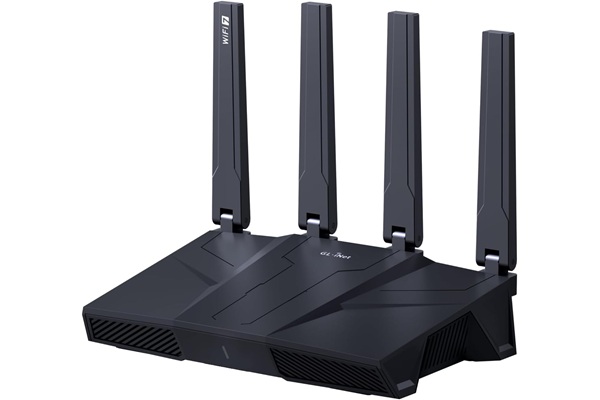Quick Overview
Since the late 1990s, Wi-Fi standards have evolved to provide faster speeds, better efficiency, and improved support for multiple devices. Some focus on speed (like 5 GHz and 6 GHz bands), while others emphasize range and wall penetration (like 2.4 GHz).
Important facts you should know
- Best Effort: Your Wi-Fi router and your device will attempt to negotiate the best possible connection based on distance, interference and the capabilities of each device.
- 2.4 GHz vs 5 GHz vs 6 GHz: 2.4 GHz travels farther and penetrates walls better but is slower and more crowded. 5 GHz is faster but has less range. 6 GHz (used by Wi-Fi 6E and Wi-Fi 7) gives extra channels and less interference but shorter range.
- Backward compatibility: New routers usually support older devices, but old devices can't use the new higher speeds or extra channels.
- Security: Older Wi-Fi security (WEP) is insecure. Use WPA2 or, better, WPA3 when available.
- Real speeds are limited by your ISP: your Wi-Fi can be faster than your internet plan — but that only helps with local transfers (like streaming from a local hard drive or gaming on a LAN).
- Interference: Other wireless devices (microwaves, Bluetooth, cordless phones) and neighboring Wi-Fi networks can slow your connection.
Wi-Fi Standards Comparison Chart
The table below shows the major Wi-Fi standards, when they were introduced,
and their theoretical top speeds and ranges. Real-world speeds are usually
lower.
Your Wi-Fi router may operate on more than one frequency.
| Standard | Year | Common Name |
Max Speed | Frequency Band(s) | Typical Indoor Range |
|---|---|---|---|---|---|
| 802.11a | 1999 | — | Up to 54 Mbps | 5 GHz | ~10–20 m |
| 802.11b | 1999 | — | Up to 11 Mbps | 2.4 GHz | ~20–35 m |
| 802.11g | 2003 | Wireless G | Up to 54 Mbps | 2.4 GHz | ~20–35 m |
| 802.11n | 2009 | Wi-Fi 4 | Up to 600 Mbps | 2.4 / 5 GHz | ~30–50 m |
| 802.11ac | 2013 | Wi-Fi 5 | Up to 1.3 Gbps | 5 GHz | ~15–30 m |
| 802.11ax | 2019 | Wi-Fi 6 Wi-Fi 6E |
Up to 9.6 Gbps | 2.4 / 5 / 6 GHz | ~15–50 m |
| 802.11be | 2024 | Wi-Fi 7 | Up to 30 Gbps | 2.4 / 5 / 6 GHz | ~15–45 m |
Note:
Theoretical speeds assume perfect
conditions. Actual speeds vary based on walls, interference, and device
distance.
Wi-Fi Coverage by Frequency Band
Lower frequencies (like 2.4 GHz) travel farther and pass through walls better, while
higher frequencies (5 GHz and 6 GHz) provide faster speeds but shorter range. The
diagrams below show simplified coverage examples for each band.
Your Wi-Fi router may operate on more than one frequency.
2.4 GHz
Longer Range
Best for wide coverage and basic devices. Slower speeds but reliable through walls.
5 GHz
Balanced Range
Faster speeds and less interference. Works best in medium-sized homes or apartments.
6 GHz
High Speed, Short Range
Fastest speeds and lowest latency, but poor wall penetration and shorter coverage area.
Tips to Improve Wi-Fi Performance
- Place your router in a central, elevated position — avoid corners and basements.
- Avoid having too many walls between the Wi-Fi router and your computers. Porus materials such as wood and drywall will weaken the signal.
- Use the 2.4 GHz band for long distance, and 5 GHz or 6 GHz for close-range high speed.
- Update your router’s firmware regularly for better performance and security.
- Minimize interference by keeping your router away from microwaves and cordless phones.
- Keep any metal objects from blocking the signal from your Wi-Fi antenna's. This would include metal desks, refrigerators, filing cabinets etc. Metal acts as a sheild and will reflect the signal causing dead spots.
- Check Device Manager to confirm your Wi-Fi card has the 'perferred network' speed such as 802.11ax for Wi-Fi 6 or whatever the best speed your device supports.
- Use WPA3 security and change default passwords to keep your network safe.
Final Thoughts
Wi-Fi has improved from the slow 802.11b days to today’s blazing Wi-Fi 7. Each generation brought faster connections, better reliability, and more capacity for the growing number of smart devices in our homes. Understanding the difference between frequency bands helps you pick the right settings for your space and get the best performance possible.



